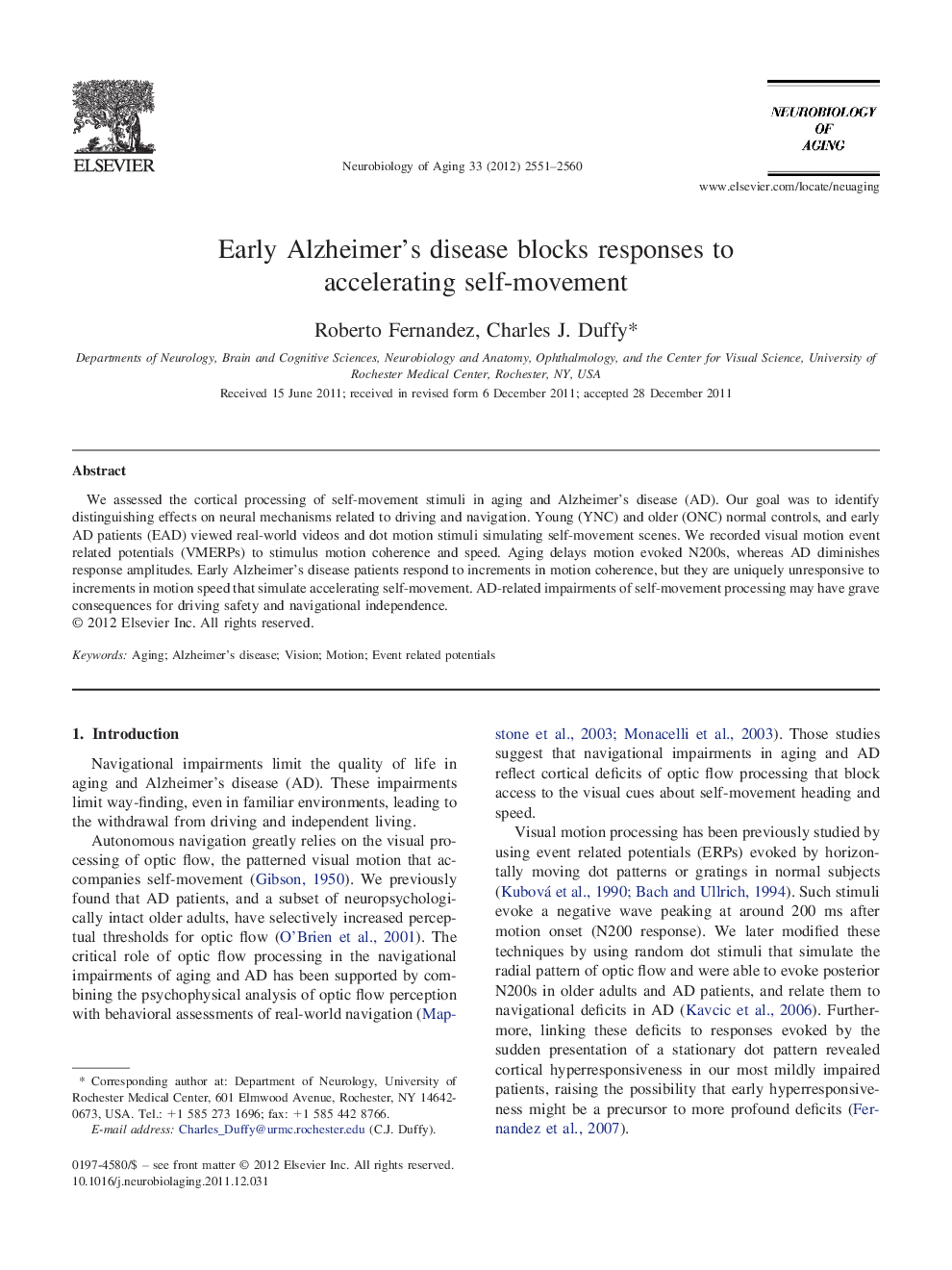| Article ID | Journal | Published Year | Pages | File Type |
|---|---|---|---|---|
| 6807991 | Neurobiology of Aging | 2012 | 10 Pages |
Abstract
We assessed the cortical processing of self-movement stimuli in aging and Alzheimer's disease (AD). Our goal was to identify distinguishing effects on neural mechanisms related to driving and navigation. Young (YNC) and older (ONC) normal controls, and early AD patients (EAD) viewed real-world videos and dot motion stimuli simulating self-movement scenes. We recorded visual motion event related potentials (VMERPs) to stimulus motion coherence and speed. Aging delays motion evoked N200s, whereas AD diminishes response amplitudes. Early Alzheimer's disease patients respond to increments in motion coherence, but they are uniquely unresponsive to increments in motion speed that simulate accelerating self-movement. AD-related impairments of self-movement processing may have grave consequences for driving safety and navigational independence.
Related Topics
Life Sciences
Biochemistry, Genetics and Molecular Biology
Ageing
Authors
Roberto Fernandez, Charles J. Duffy,
